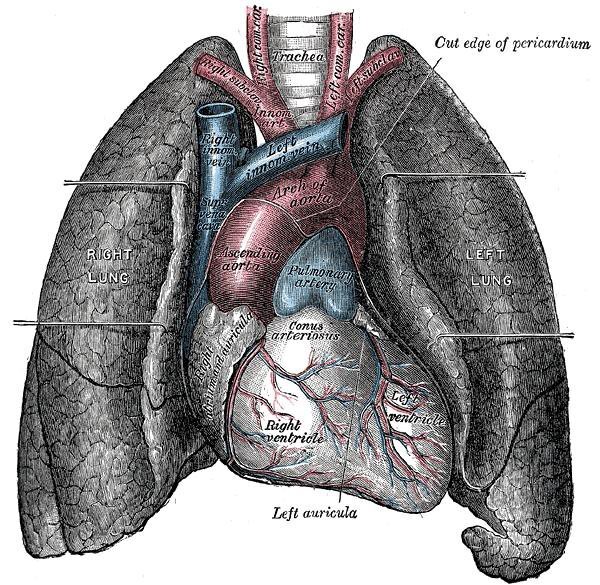Henry Gray: the man behind anatomy
 Gray's Anatomy has remained an educational icon for anatomy since it was first published in 1858 by Henry Gray. Almost everyone, including those outside of the medical field, know Gray's Anatomy as the authoritative textbook of human gross anatomy. Today people tend to associate Gray's Anatomy with the popular TV show, which I must say I have been sucked into as well.But who was Henry Gray (1827-1861)?Gray was an English anatomist and surgeon. Born in 1827, not much is known about his childhood or his inspirations for going into the medical field. Nonetheless, when he was 18 he entered as a professional student at St. George's Hospital, London. According to an article in the St. George's Hospital Gazette of May 21st, 1908, he "is described by those who knew him as a most painstaking and methodical worker, and one who learnt his anatomy by the slow but invaluable method of making dissections for himself."By the age of 25 he was elected as a Fellow of the Royal Society, and in the following year he obtained the Astley Cooper of 300 guineas for his dissertation "On the Structure of the Spleen." On a side note, Astley Cooper was another famous English surgeon and anatomist who described several new anatomical structures, many of which were named after him: Cooper's fascia, Cooper's ligament, Cooper's hernia, etc.Finally, when Gray was only 31, he published the first edition of Gray's Anatomy, which consisted of 750 pages and 363 illustrations. The latest editions of Gray's Anatomy are now nearly 1,700 pages! A lot of the initial success of the text is attributed to the detailed illustrations. Fortunately, Gray had a good friend who could draw, Dr. H.V. Vandyke Carter. Gray approached Carter and proposed that they collaborate on a new manual of anatomy for students. Carter, a skilled draughtsman, made the 363 illustrations for Gray's Anatomy.
Gray's Anatomy has remained an educational icon for anatomy since it was first published in 1858 by Henry Gray. Almost everyone, including those outside of the medical field, know Gray's Anatomy as the authoritative textbook of human gross anatomy. Today people tend to associate Gray's Anatomy with the popular TV show, which I must say I have been sucked into as well.But who was Henry Gray (1827-1861)?Gray was an English anatomist and surgeon. Born in 1827, not much is known about his childhood or his inspirations for going into the medical field. Nonetheless, when he was 18 he entered as a professional student at St. George's Hospital, London. According to an article in the St. George's Hospital Gazette of May 21st, 1908, he "is described by those who knew him as a most painstaking and methodical worker, and one who learnt his anatomy by the slow but invaluable method of making dissections for himself."By the age of 25 he was elected as a Fellow of the Royal Society, and in the following year he obtained the Astley Cooper of 300 guineas for his dissertation "On the Structure of the Spleen." On a side note, Astley Cooper was another famous English surgeon and anatomist who described several new anatomical structures, many of which were named after him: Cooper's fascia, Cooper's ligament, Cooper's hernia, etc.Finally, when Gray was only 31, he published the first edition of Gray's Anatomy, which consisted of 750 pages and 363 illustrations. The latest editions of Gray's Anatomy are now nearly 1,700 pages! A lot of the initial success of the text is attributed to the detailed illustrations. Fortunately, Gray had a good friend who could draw, Dr. H.V. Vandyke Carter. Gray approached Carter and proposed that they collaborate on a new manual of anatomy for students. Carter, a skilled draughtsman, made the 363 illustrations for Gray's Anatomy. Carter actually helped carry out the dissections with Gray to get the most accurate representation possible. Because of its illustrations, Gray's Anatomy became superior to any other anatomy text around at the time. Unfortunately, Carter never received any royalties for his painstaking work.Sadly, Gray died of smallpox at the young age of 34, which he contracted while looking after a nephew who was suffering from the disease. In his short lifetime he was demonstrator of anatomy, curator of the museum, and lecturer of anatomy at St. Georg's Hospital, London. And of course, his biggest accomplishment of all, Gray's Anatomy, is still widely accepted as an extraordinary book for medical students.I always pictured Gray as an old man with white hair and glasses, you know, that professor type. So I was shocked to find out that he was only 31 when he wrote Gray's Anatomy. He did so much as a young man, imagine what he could have accomplished had he lived a full life. He is truly inspirational.Gray's Anatomy is such an invaluable resource for medical students and medical professionals everywhere and especially for medical illustrators. If there is ever a need to find accurate details of a certain anatomical part, you can find it in Gray's Anatomy. It's the first text I turn to when starting any medical illustration project.
Carter actually helped carry out the dissections with Gray to get the most accurate representation possible. Because of its illustrations, Gray's Anatomy became superior to any other anatomy text around at the time. Unfortunately, Carter never received any royalties for his painstaking work.Sadly, Gray died of smallpox at the young age of 34, which he contracted while looking after a nephew who was suffering from the disease. In his short lifetime he was demonstrator of anatomy, curator of the museum, and lecturer of anatomy at St. Georg's Hospital, London. And of course, his biggest accomplishment of all, Gray's Anatomy, is still widely accepted as an extraordinary book for medical students.I always pictured Gray as an old man with white hair and glasses, you know, that professor type. So I was shocked to find out that he was only 31 when he wrote Gray's Anatomy. He did so much as a young man, imagine what he could have accomplished had he lived a full life. He is truly inspirational.Gray's Anatomy is such an invaluable resource for medical students and medical professionals everywhere and especially for medical illustrators. If there is ever a need to find accurate details of a certain anatomical part, you can find it in Gray's Anatomy. It's the first text I turn to when starting any medical illustration project.
